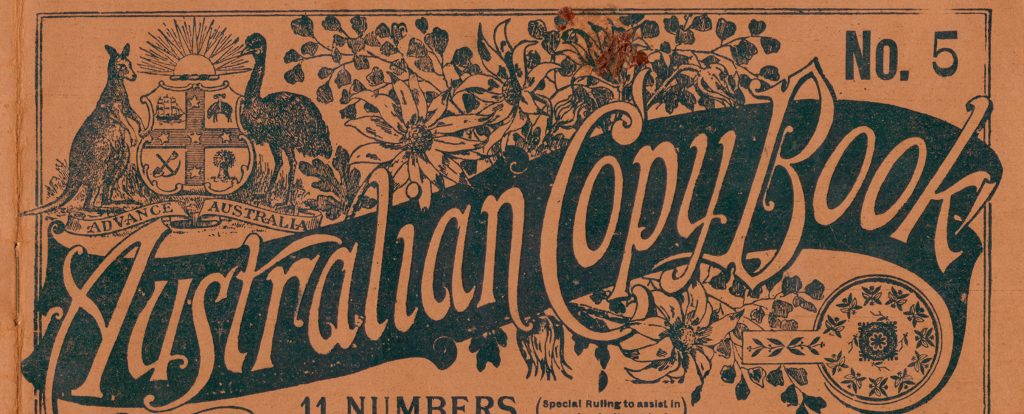
Published by Angus and Robertson, this ‘Australian Copy Book’ was the fifth in a series of eleven, all aimed at training the hands of young Australians in good penmanship. The ability to write quickly and neatly in a ‘fair hand’ was a valuable asset in the labour market for office and bank workers. Phrases like […]
Read More…

Ernest McIlveen (1898-1963) might have been around nine years of age when he demonstrated his prowess with scissors in his standard issue drawing book. Using coloured paper, Ernest diligently made thirteen kaleidoscopic designs, recording six of them in hand drawn graphs in the top left corner with pencil and ruler. He may have made them […]
Read More…
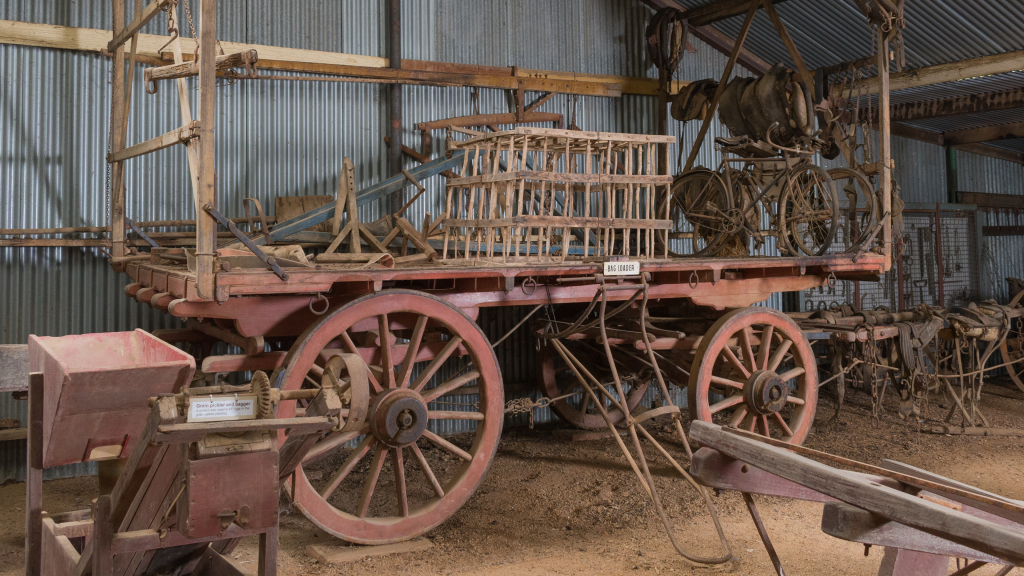
Migration is the result of push and pull factors and the German settlers who eventually ended their journey in the district of Jindera in the 1860s experienced both. Schism in the Lutheran church and economic factors drove the German settlers from Prussia to the colony of South Australia and the attractiveness of the NSW Robertson […]
Read More…

This small weatherboard Post Office building was originally located north of Jindera at Huon and serviced the area between Jindera and Burrumbuttock. Huon Post Office had a very short life but one which was essential for the local residents. It was established as a non-official receiving office in 1895, then upgraded to a non-official Allowance […]
Read More…
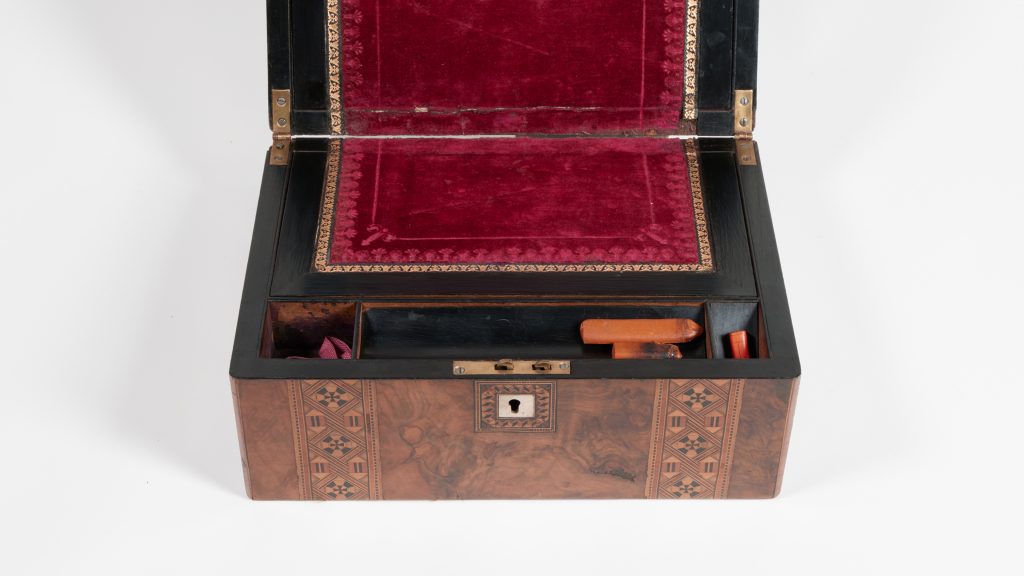
The laptop of its day, this portable writing desk allowed the writer freedom to move around. Perfect for use next to an open fire or beneath a shady tree in one’s garden, its lower compartments tidily held ink, paper and pens. This late nineteenth-century example belonged to Alexander (1837-1915) and Ann Hanlon (nee Boyd) (1839-1929). […]
Read More…
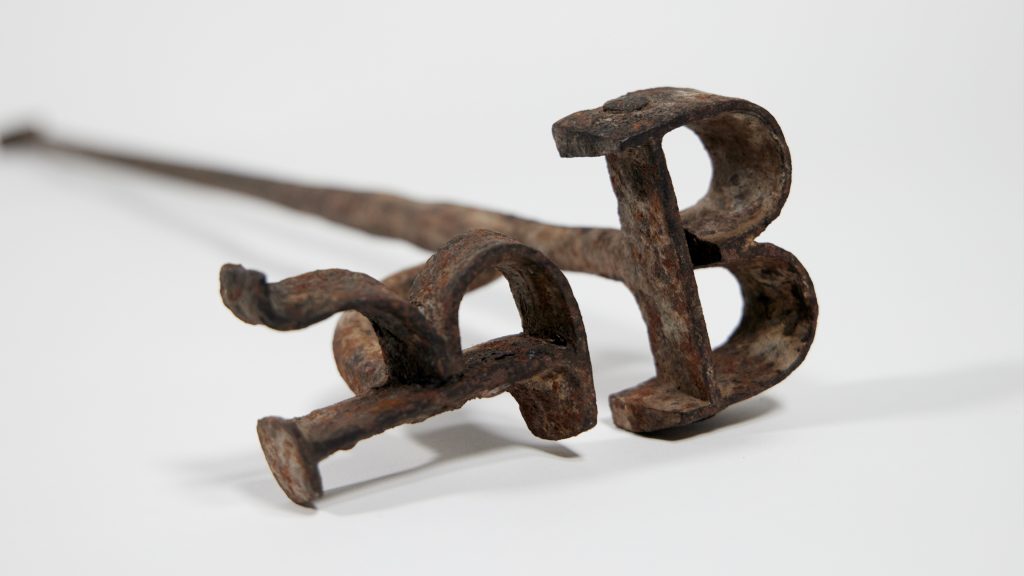
In nineteenth-century NSW, owning horses and cattle was common. An important asset for many, losing a horse, cow or bullock could mean losing your transport or livelihood. Livestock was a favoured target of thieves who were only abetted by patchy fencing and primitive communications. In the 1860s, newspapers fretted that cattle stealing had reached ‘alarming […]
Read More…
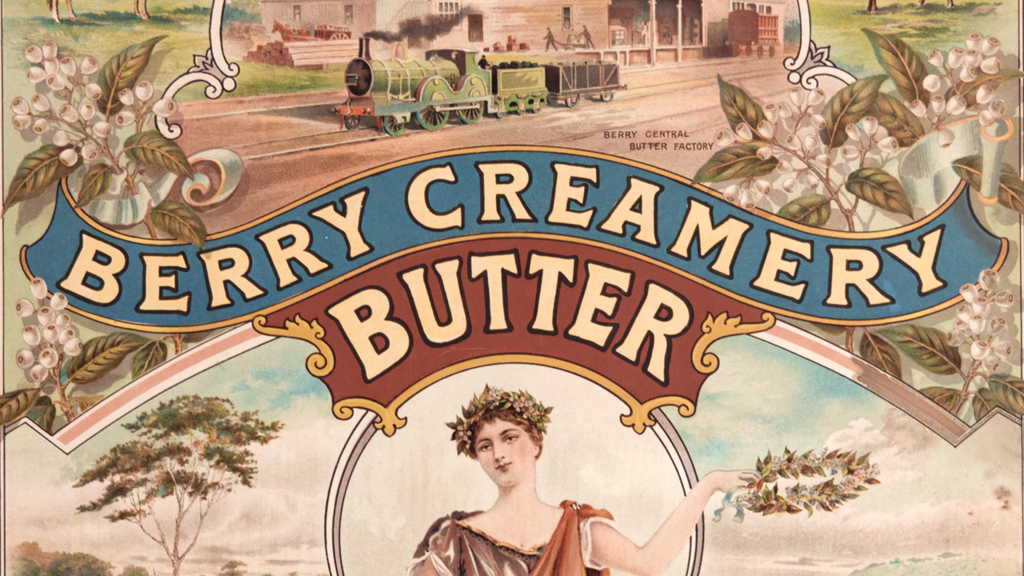
The Berry Central Creamery was built in 1895 and within a few years became the first factory in NSW to adopt pasteurisation technology. Farmers from across the region delivered their milk to the Creamery, then described as ‘the largest and most complete butter factory in the colony.’ This advertisement was printed and distributed in England. […]
Read More…

Made before decimal currency was adopted in Australia, this bank bag was used in Berry by customers and staff of the local English, Scottish and Australian Bank (ES&A Bank) up until its closure. In 1884-5, the ES&A Bank began building a branch in the country town of Berry. The building was one of five small-scale […]
Read More…

This printing stone was used by The English, Scottish & Australian Bank to make blank cheques for its customer, the Berry Central Butter Factory. Cheques made from this stone were used by the company to pay its bills, including to local milk producers. Cheques came into existence as far back as the seventeenth century and […]
Read More…
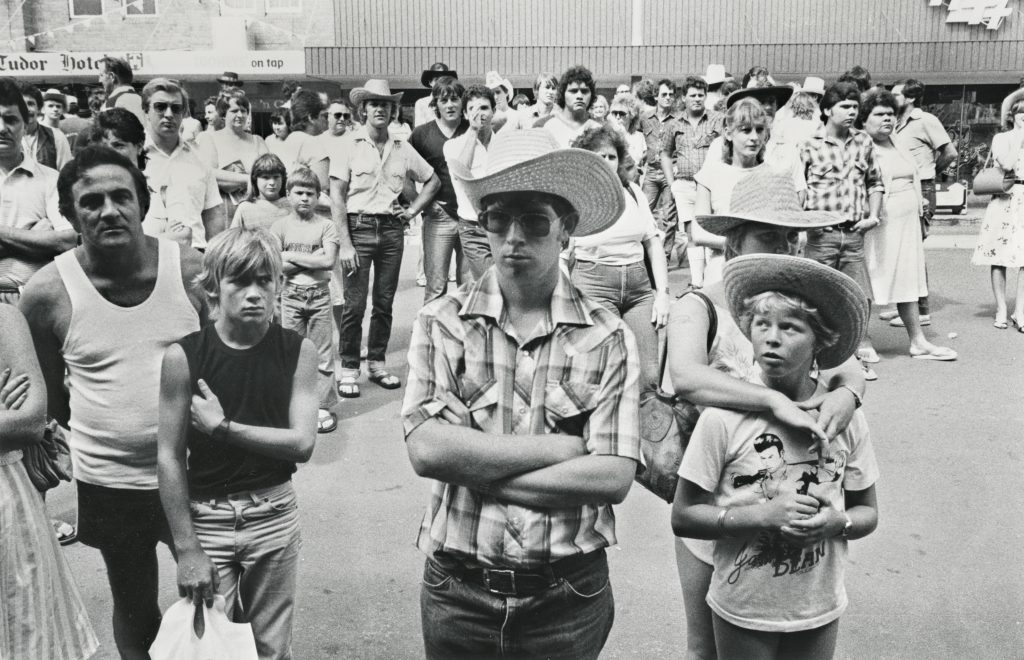
In her photographs of Tamworth, Judith Ahern shows us the characters and camaraderie of its famous country music festival with unflinching honesty; capturing everything but the sound of the music itself. Ahern took her camera backstage, into the pubs, and out to the streets during the festivals of the late-1980s, when Tamworth was cementing its […]
Read More…











